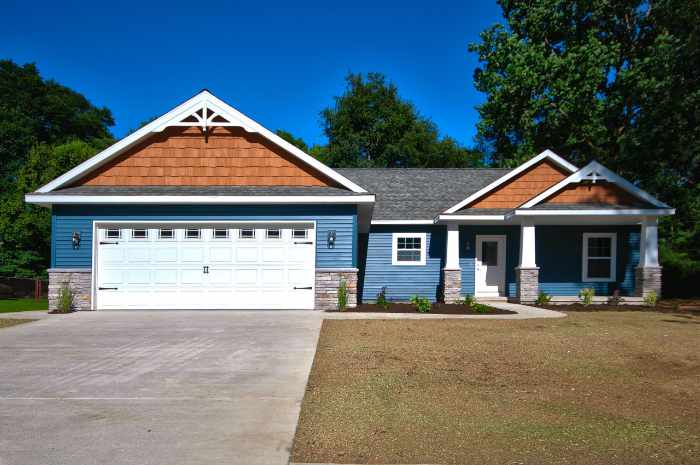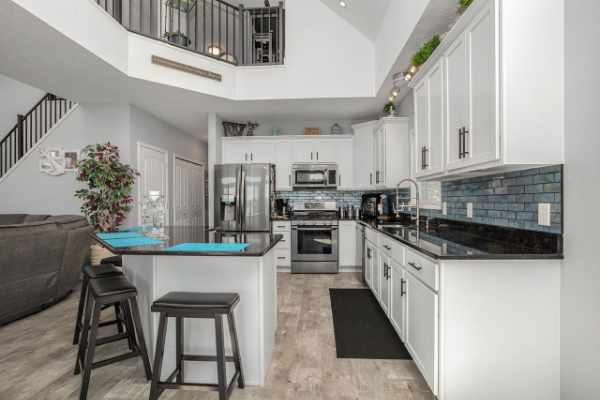While modular homes tend to be less expensive than site-built houses because they’re built off-site and then moved into place, they still cost more than most apartments or condos. Before shopping for your modular home, you must decide which modular home floor plan best suits your needs.

How to Pick a Modular Home Floor Plan
Picking a modular home floor plan is not hard if you keep two core things in mind: your family’s current needs and your future needs. It’s great if you want to save money and build faster.
But the fundamental goal of modular home construction should be ensuring you get what you want when the house is finished. This is for now and down the road.
1. Design for the Future
If you’re moving into a modular home, chances are that you know that your family is going to be growing. It might be tempting to pick the most effective modular home floor plan possible and call it a day. However, this isn’t always the most practical option.
When looking at modular homes, you’ll usually see two-floor plans: master-on-main or split-bedroom. The master-on-main plan is precisely what it sounds like—the master bedroom is on one end of the house, with all other bedrooms branching off from there. The split-bedroom plan has bedrooms on either side of the home, allowing for more privacy. Both options have their pros and cons depending on where in your life your family is heading next.
If you think your family will grow beyond its current size shortly, don’t get too attached to either option just yet. Consider how big your family will be when deciding on modular homes in five years. If you think there’s still room for growth, go for a split bedroom layout. It offers more privacy and gives you flexibility if someone moves out or gets married and needs their own space again down the road.
Additionally, when planning for a growing family, it’s crucial to ensure ample storage space. Installing more cabinetry can be a wise decision, allowing you to organize and store your belongings efficiently. To optimize functionality, choosing the right drawer slides is essential. Opt for high-quality slides that offer smooth and quiet operation while providing excellent weight capacity. Soft-closing drawer slides are particularly convenient, as they prevent slamming and ensure a more pleasant experience when accessing your items.
With thoughtful storage planning, your modular home can not only accommodate your family’s expanding needs but also offer a well-organized and clutter-free living environment.
2. Focus on Common Areas
Once you’ve decided on the style of your new modular home, focus on common areas. Consider what each room will be used for, how many bedrooms and bathrooms you’ll need, and whether there will be enough space for entertaining guests or hosting large family gatherings.
For example, if you have young children who spend most of their time indoors playing video games or watching TV, then an open-concept layout with a large kitchen and living room may be best. If you plan to host parties or enjoy spending time outdoors, consider adding an expansive deck or patio that offers plenty of space for entertaining.
Plan for home offices, exercise rooms, and guest rooms. These extra rooms can be added later if needed, but they should be built into the initial design of your modular home floor plan.
3. Check the Locations of Outlets and Switches
The location of outlets and switches is essential when choosing your floor plans.
You want to ensure they are placed in areas where they will be easily accessible. For example, if there is an outlet near the kitchen sink, it will be easy to plug in your appliances or hand mixer while doing dishes.
Most bathrooms will have an outlet near the sink. This way you can charge your phone while getting ready in the morning. The same goes for electrical outlets. Imagine yourself in the space. Consider the furniture place and where you’ll be plugging in lamps or electronic devices.
Avoid choosing a modular home plan with multiple bathrooms if you only need one. They require more wiring (and plumbing) than single-bathroom models.
4. Stairs and Doors
Think about where you want your stairs to go, so they don’t block any doors or windows. If your house is going up against an incline or hill, make sure there are no sharp turns in the staircase.
Check out the many doors in each room and ensure they open correctly (some modular homes come with pre-hung doors). Door placement is vital because it determines whether or not you can use certain rooms for different purposes. For example, if you have a large master bedroom that includes both a closet and en suite bathroom but only one door leading into it from another room, then you won’t be able to utilize that room as a guest room or office.
5. Kitchen

The kitchen is one of the most important spaces to consider when choosing a floor plan for your modular home. It’s also one of the most challenging spaces in a home. With so many sizes, layouts, and design options, it can be challenging to determine which kitchen will work best for your family.
The first thing you should consider when choosing a kitchen is whether or not you want an island. While it is possible to spend too much on your kitchen, islands are a cost-effective way to provide additional counter space and storage. Some modular home floor plans will include built-in desks. These and other functional additions can be used as part of the island design.
However, islands aren’t suitable for every family if the kitchen is very small. If this is the case for you, then you might want to go with a galley or U-shaped kitchen. You always want to make sure there’s plenty of space to move around inside the kitchen.
Final Say
As you browse the potential floor plans, ensure it features plenty of natural light and fresh air. This means lots of windows! It’s important not to compromise on space as your family grows, you’ll want to ensure that your home can grow with them.



